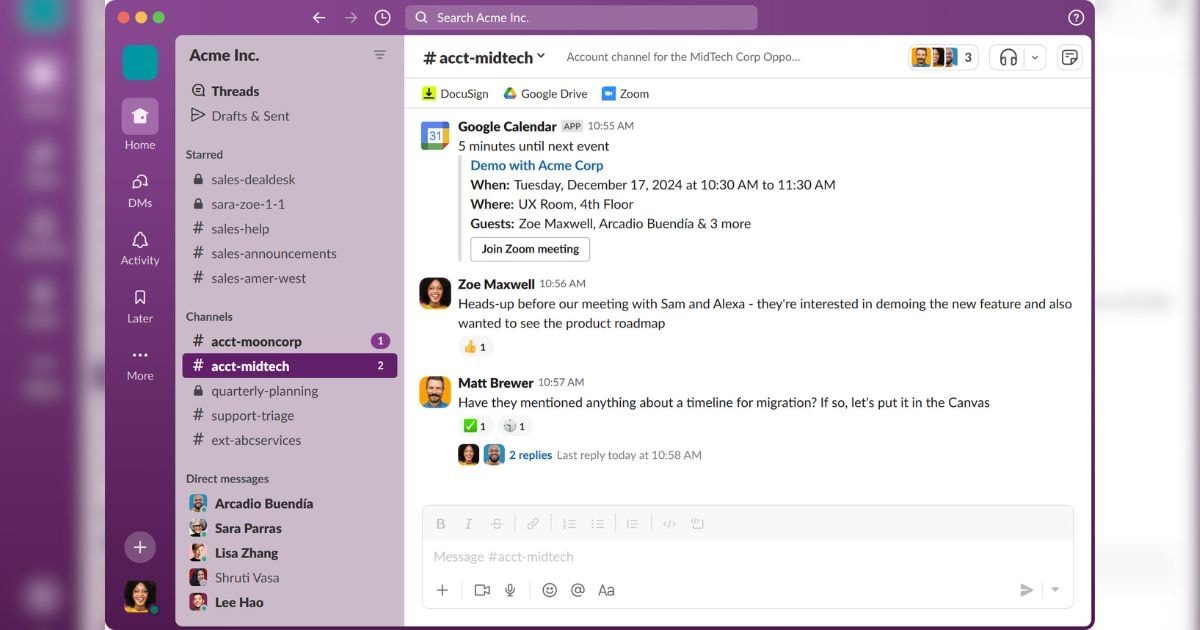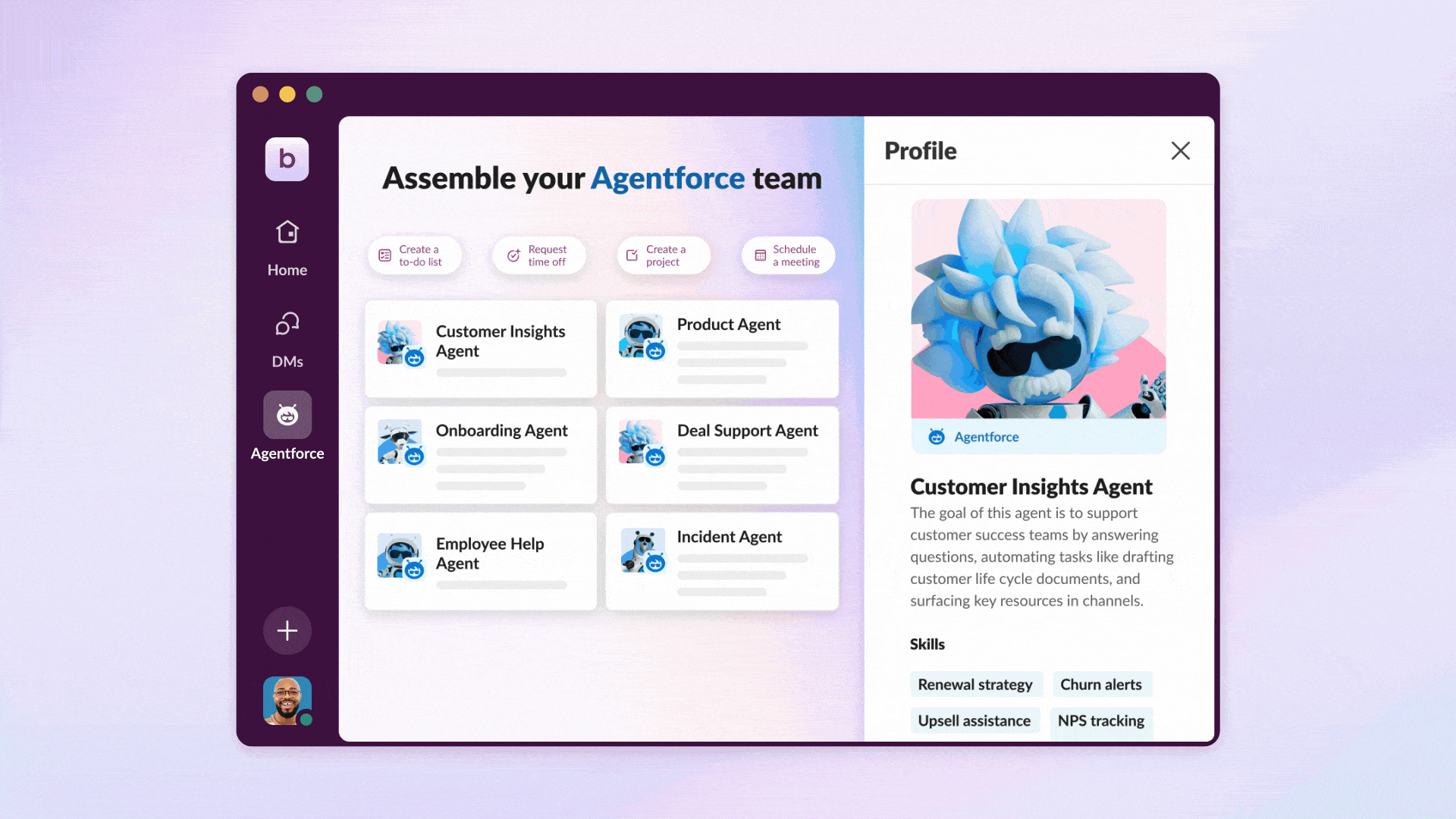Slack Just Got Smarter at Work

The popular Agentforce from the house of Salesforce is making its way on Slack. This integration aims to turn the workplace chat app into a central hub for intelligent, task-driven digital teammates. Starting today, users can deploy employee-facing agents directly inside Slack.
With this rollout, Agentforce becomes part of the daily conversation in Slack. It can respond to @mentions, access Salesforce data, and retrieve files from third-party tools like Google Drive and Asana. It’s not a backend automation tool anymore.

Agents with Context, Not Just Scripts
Unlike traditional chatbots, Agentforce in Slack taps into your company’s Salesforce Data Cloud, historical Slack conversations, and even third-party integrations to offer contextual and permissioned support.
It allows employees to ask natural-language questions like “Where is the OKR presentation?” or “Summarize the Acme account,” and the agent pulls together relevant responses from multiple sources in real-time. Since these agents operate with user-level permissions, they can respond based on what each employee is allowed to see or do.
Templates for Instant Setup
Salesforce is rolling out Slack Employee Agent Templates on June 12. These include:
- Slack Customer Insights: Summarizes sales opportunities, updates CRM records, and creates shareable canvases using both Salesforce and Slack data.
- Slack Onboarding: Helps new hires get up to speed by pointing them to relevant policies, people, and company knowledge within Slack.
- Slack Employee Help: Answers routine HR, IT, and legal questions by pulling from shared documentation, Slack history, and internal resources.
Each template comes pre-loaded with topics, workflows, and action steps but can be customized to fit company-specific needs.
New Tools to Expand Agent Capabilities
Salesforce is also introducing two new capabilities:
- Slack Enterprise Search allows agents to search across connected tools—such as OneDrive, Google Drive, Asana, and Slack to deliver better-informed answers.
- General Slack Topic: Gives agents the context of the user’s permissions and recent Slack interactions, allowing them to take relevant, secure actions like sending DMs, creating handoff canvases, or retrieving past messages.

The company also allows users to share knowledge inside Slack. It allows sharing prompts such as how to convert a trial customer to a paid one in channels or embed them in canvases. This reduces repetitive questions and helps teams get more value out of agents faster.
